1983
INMATE POPULATION JUNE 30, 1983: 27,717
The Correctional Reform Act of 1983 (initiated by Task Force recommendations) passes the legislature and is signed by the Governor on June 15, 1983. This Act authorizes an emergency release mechanism when the prison population reaches 98% of its lawful capacity. Sentencing Guidelines are implemented. Parole is discontinued for offenders sentenced after October 1, 1983 (with some exceptions). Community Control (House Arrest) is implemented as an alternative to alleviate prison overcrowding.
Offender Based Information System (OBIS): New databases implemented this year include the Inmate Banking System (IBS) and Inventory Control system (ICS). With bank information available on a daily basis, inmate draws (withdrawals from their inmate bank accounts) are faster and easier to process. Machine-generated checks for transfers and releases are a big plus for the accounting offices.
Okaloosa Correctional Institution (Crestview, FL) opens.
ESCAPING INMATE SHOT AND KILLED AT HENDRY CORRECTIONAL INSTITUTION
On January 2, 1983 at 5:45 p.m. at Hendry C.I., the perimeter alert security system notifies the Control Room that someone is on the fence in a specific zone. The tower officer observes inmate Ignacio Urutia climb over the first fence and orders the inmate to stop several times. The inmate continues to climb the second fence. (Most prisons have two perimeter fences.)
The officer fires two warning shots into the air with his shotgun and the inmate does not stop. He fires another shot near the inmate and the inmate continues to climb. The officer then gets his AR-15 rifle and another officer joins him and they fire several more shots. Inmate Urutia runs about 50 yards from the outer perimeter fence before he is stopped by a bullet. He is pronounced dead at 7:35 p.m. at Naples General Hospital. The inmate is a former Mariel refugee, serving a three-year sentence for burglary, aggravated assault with a deadly weapon and battery on a law enforcement officer.
Sergeant John S. Dennard is attacked by inmates on May 5, 1983, in the main housing unit office at Union Correctional Institution. Sergeant Dennard is stabbed several times with a sharp instrument and dies after being transported by helicopter to the hospital.
More information is provided in these two articles from the June 1983 Correctional Compass:
IN MEMORIAM
FDC MOURNS TRAGIC LOSS
OF SGT. STEVEN DENNARD
Several hundred uniformed, off-duty correctional officers and additional Florida Department of Corrections personnel paid a final tribute to fellow officer John Steven Dennard, 29, of Orange Park, May 9, 1983, who was brutally stabbed to death at Union Correctional Institution at Raiford May 5.

Sgt. Steven Dennard
Three additional officers, Mitch Anderson, 32, Raiford, Richard Harvey, 29, Lake Butler, and Tommy Baker, 29, Starke, were also injured in the attack and were sent to Shands Teaching Hospital for treatment of stab wounds. All three officers have been released from the hospital.
A five-year-veteran of the Florida Department of Corrections, Dennard knew of the daily dangers he faced when he entered the UCI compound, but he accepted his responsibilities with exemplary dedication and professionalism.
Dennard joined the Florida Department of Correction as a Correctional Officer I at Union C.I. on March 29, 1978. It was only a week before his slaying, April 29, that he was promoted to Correctional Officer II (Sergeant).
A graduate of Andrew Jackson High School in Jacksonville in June 1971, Dennard worked as a carpenter prior to his employment with the Department. He was attending classes at Florida Junior College.
Steven is survived by his wife, Shirley Dennard.
Secretary's Message
For the second time in less than one year, and for the third time since October 1980, we are saddened and outraged by the senseless slaying of an officer of the Florida Department of Corrections.
Union Correctional Institution Sgt. John S. (Steve) Dennard died from vicious stab wounds administered during an unprovoked attack. Three other officers were senselessly wounded in the same assault.
It was only last August that Probation and Parole Supervisor Bjorn Thomas Svenson's life was ended in another sneak attack at his office. And just a year before that, Correctional Officer Richard J. Burke gave his life in duty when an inmate at Florida State Prison stabbed him to death.
Three needless slayings. Three loyal officers gone. Three families grieving as we in the Department of Corrections join them in their suffering and pain.
Every one of us who has walked a compound is aware of the inherent dangers in our job. We train to protect ourselves, we guard against sneak attacks and we hope that we will survive. The sad truth is that some of us will not escape.
Three lives gone in three years is too much. One life gone in three years is too much.
Our prisons are overcrowded and our security and Probation and Parole staffs are short-handed. Our men and women on the prison compound must have the odds narrowed in their favor. Whatever it takes to accomplish this goal within lawful, orderly means must be done. We in the Department have been pleading our case incessantly with all who have the power and authority to assist us and we are encouraged by the sympathetic ears which are now turned in our direction.
Murder of officers must cease. I will do whatever is possible to alleviate those conditions that make such crimes a possibility.
L.L. Wainwright
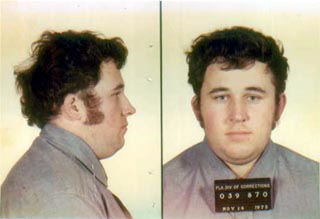
Robert Sullivan
Robert Sullivan becomes the second inmate to be executed since reinstatement of the death penalty. He was convicted of robbing a man and the establishment where he worked, then taking him to a remote location in Dade County and killing him with four blasts to the back of the head from a .12 gauge shotgun.
Because of issues raised during the 1979 Spenkelink execution, an independent observer is present at the inmate's cellfront to watch and record all activity during the last day of the inmate's life. The observer's purpose is to ensure the inmate is treated properly.
SECOND EXECUTION AFTER REINSTATEMENT OF THE DEATH PENALTY
One of the activities that the witness observes and dutifully records is that FSP Superintendent Richard Dugger sits down in the cell with Sullivan for about an hour and shares part of a bottle of scotch. This practice, which began with John Spenkelink, is performed openly within sight of several other officers and staff. Supt. Dugger and Sullivan discuss Sullivan's life and impending death, and his crime, among other issues. They part amicably, with a handshake.
(Supt. Dugger says that with Spenkelink, then-Superintendent David Brierton came up with the idea to simply give the condemned inmate a last drink - in Spenkelink's case, it was Jack Daniels. Brierton bought it and gave it to then-Asst. Supt. Dugger in a flask. But Spenkelink was somewhat mistrustful of taking the first drink and he told Dugger, "No, you first," so Dugger asked for a glass and complied. With Sullivan's execution, Supt. Dugger went a step further and joined him not only in a drink, but sat with him in his cell.)
Secretary Wainwright was "displeased" with this turn of events, and the practice was halted. Says Dugger today "I think his decision was correct and in retrospect it was not a good idea."
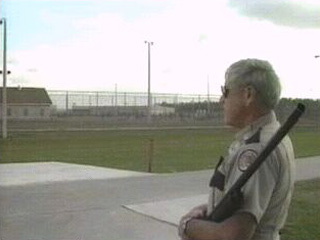
Correctional Officer stands watch
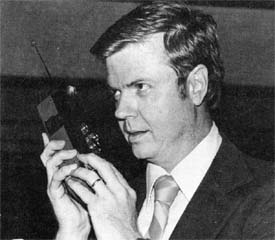
Community Control Officer maintaining contact with law enforcement during field surveillance contacts.

Offender making cost of supervision and victim restitution payments.
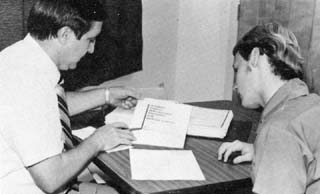
Florida minimum student performance standards have been used to develop special curriculums and tests for inmate education.

Cost-effective public transportation is used by inmates on work release.
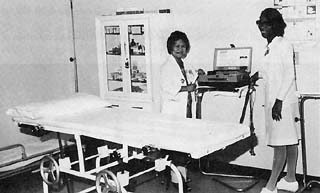
Health Services emergency room at Lawtey Correctional Institution.
- 1821-1845
- 1868-1876
- 1877-1895
- 1900-1919
- 1921
- 1922-1924
- 1927
- 1928-1931
- 1932 | CHAPMAN
- 1933-1935
- 1936-1939
- 1940-1945
- 1946-1949
- 1950-1955
- 1956-1961
- 1962 | WAINWRIGHT
- 1963-1965
- 1966-1969
- 1970-1975
- 1976-1979
- 1980-1986
- 1987 | DUGGER
- 1988-1990
- 1991 | SINGLETARY
- 1992-1995
- 1996-1998
- 1999 | MOORE
- 2000-2002
- 2003 | CROSBY
- 2004-2005
- 2006 | MCDONOUGH
- 2007
- 2008 | MCNEIL
- 2009-2010
- 2011 | BUSS
- 2011 | TUCKER
- 2012 | CREWS
- 2013-2014
- 2014 | JONES
- 2015-2018
- 2019 | INCH
- 2020-2021
- 2021 | DIXON
- 2022-Today
- Population Summary Table

